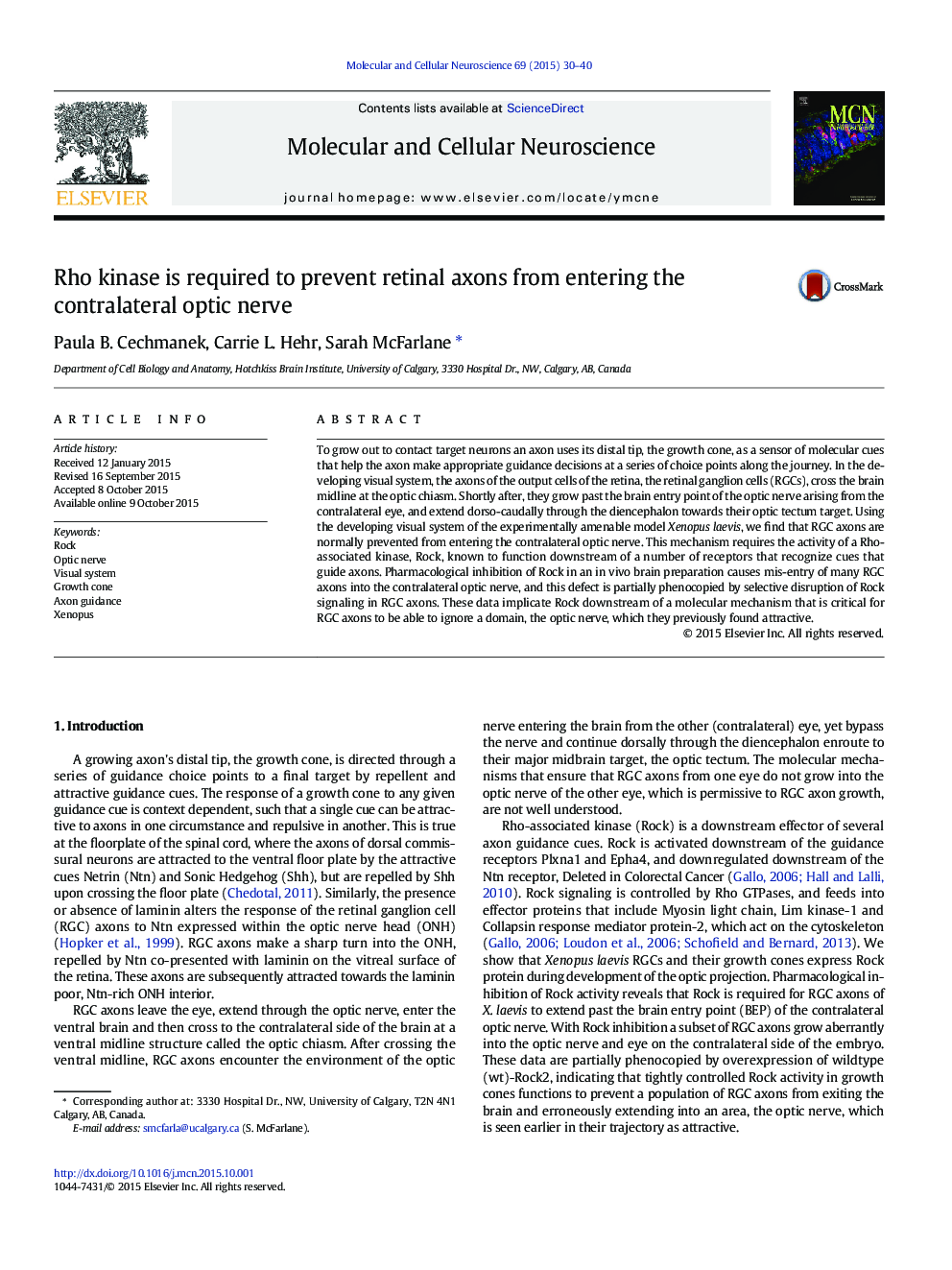| Article ID | Journal | Published Year | Pages | File Type |
|---|---|---|---|---|
| 2198435 | Molecular and Cellular Neuroscience | 2015 | 11 Pages |
•Xenopus rock1 is identified.•Rock is expressed in retinal ganglion cells and their axons.•Rock prevents retinal axons from entering the contralateral optic nerve.•Rock plays little role in retinal axon extension in the optic tract.
To grow out to contact target neurons an axon uses its distal tip, the growth cone, as a sensor of molecular cues that help the axon make appropriate guidance decisions at a series of choice points along the journey. In the developing visual system, the axons of the output cells of the retina, the retinal ganglion cells (RGCs), cross the brain midline at the optic chiasm. Shortly after, they grow past the brain entry point of the optic nerve arising from the contralateral eye, and extend dorso-caudally through the diencephalon towards their optic tectum target. Using the developing visual system of the experimentally amenable model Xenopus laevis, we find that RGC axons are normally prevented from entering the contralateral optic nerve. This mechanism requires the activity of a Rho-associated kinase, Rock, known to function downstream of a number of receptors that recognize cues that guide axons. Pharmacological inhibition of Rock in an in vivo brain preparation causes mis-entry of many RGC axons into the contralateral optic nerve, and this defect is partially phenocopied by selective disruption of Rock signaling in RGC axons. These data implicate Rock downstream of a molecular mechanism that is critical for RGC axons to be able to ignore a domain, the optic nerve, which they previously found attractive.
